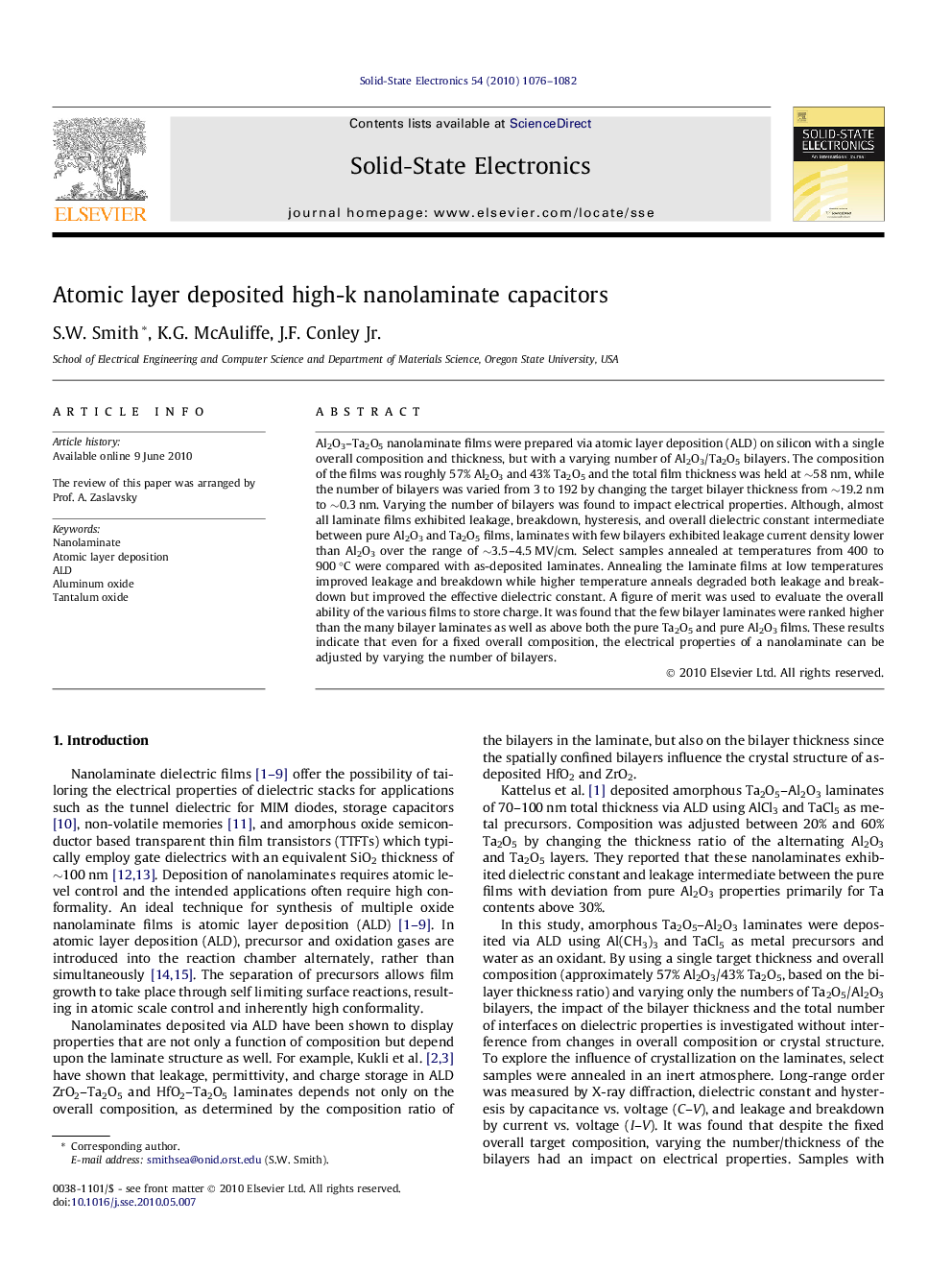| Article ID | Journal | Published Year | Pages | File Type |
|---|---|---|---|---|
| 748962 | Solid-State Electronics | 2010 | 7 Pages |
Al2O3–Ta2O5 nanolaminate films were prepared via atomic layer deposition (ALD) on silicon with a single overall composition and thickness, but with a varying number of Al2O3/Ta2O5 bilayers. The composition of the films was roughly 57% Al2O3 and 43% Ta2O5 and the total film thickness was held at ∼58 nm, while the number of bilayers was varied from 3 to 192 by changing the target bilayer thickness from ∼19.2 nm to ∼0.3 nm. Varying the number of bilayers was found to impact electrical properties. Although, almost all laminate films exhibited leakage, breakdown, hysteresis, and overall dielectric constant intermediate between pure Al2O3 and Ta2O5 films, laminates with few bilayers exhibited leakage current density lower than Al2O3 over the range of ∼3.5–4.5 MV/cm. Select samples annealed at temperatures from 400 to 900 °C were compared with as-deposited laminates. Annealing the laminate films at low temperatures improved leakage and breakdown while higher temperature anneals degraded both leakage and breakdown but improved the effective dielectric constant. A figure of merit was used to evaluate the overall ability of the various films to store charge. It was found that the few bilayer laminates were ranked higher than the many bilayer laminates as well as above both the pure Ta2O5 and pure Al2O3 films. These results indicate that even for a fixed overall composition, the electrical properties of a nanolaminate can be adjusted by varying the number of bilayers.
